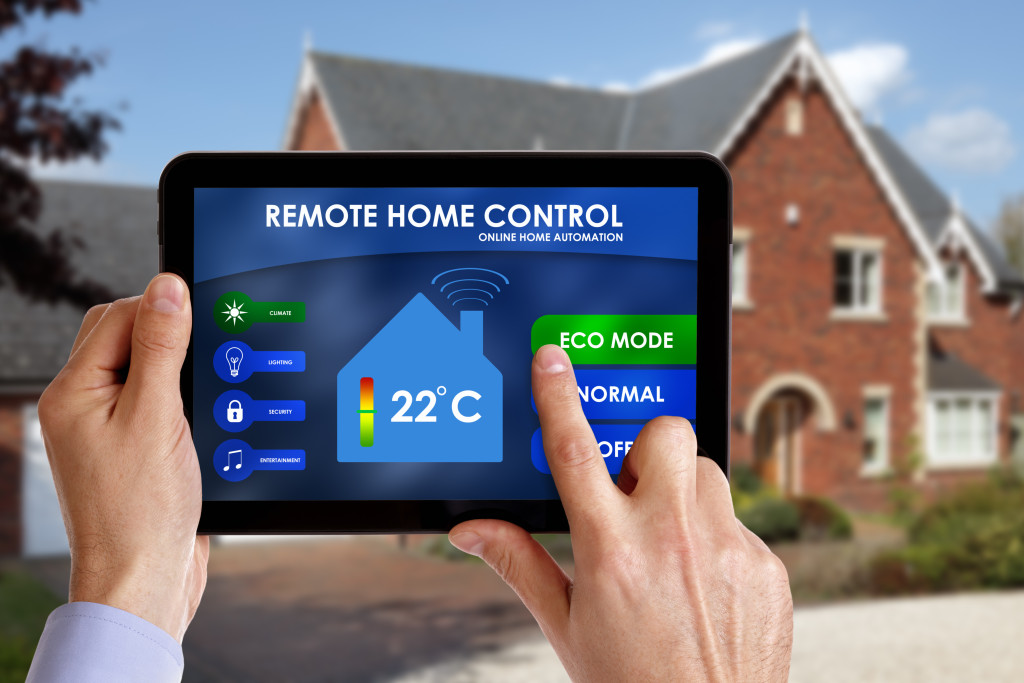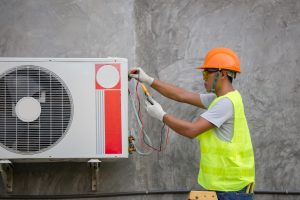- Switch to renewable flooring materials such as bamboo or cork.
- Reduce energy usage with low-energy lighting solutions like LED bulbs, motion sensors, or timers.
- Create an eco-friendly landscaping plan that includes native plants, low-flow irrigation systems, and xeriscaping.
- Use door frames made from recycled materials and low-VOC paint for interior doors.
- Construct a green roof or living wall to reduce energy loss.
When it comes to eco-friendly renovations, every bit counts. Whether switching out light bulbs or installing solar panels, there are endless opportunities for creating a greener living space. Adopting sustainability practices in all aspects of life is essential for combating climate change. By transitioning to renewable energy sources, you can save money on your utility bills while reducing your environmental impact. This article will discuss five eco-friendly renovations you can make to your home.
1. Use Renewable Flooring Materials
One of the most efficient ways to make an eco-friendly renovation is to install renewable flooring materials such as bamboo or cork. Bamboo and cork are not only durable and aesthetically pleasing, but they are also highly sustainable due to their rapid growth rate and low environmental impact. If you’re looking for even more eco-friendly options, consider natural linoleum or wool carpeting made from organic fibers.
2. Switch to Low-Energy Lighting Solutions
Another great way to reduce your home’s energy consumption is to switch to low-energy lighting solutions. LED light bulbs can help you save up to 75% of the energy that traditional incandescent bulbs use, and they last 25 times longer too! If you’re looking for an even more efficient option, consider installing motion sensors or timers in your home that will automatically turn off lights when not in use.
3. Create an Eco-Friendly Landscaping Plan

Regarding eco-friendly landscaping, the goal should be to reduce water usage and promote native plants. Native plants naturally adapt to the climate and require very little maintenance, making them ideal for creating a sustainable outdoor space. Low-flow irrigation systems can help reduce water usage while also encouraging plant growth. Additionally, xeriscaping, or “dry landscaping,” is another great way to create a drought-resistant and low-maintenance garden.
4. Consider Eco-Friendly Solutions for Your Interior Doors
When it comes to interior doors, there are several eco-friendly options available that can help reduce energy loss and improve air quality in your home. Installing sliding doors provides an extra layer of protection from the elements while promoting energy efficiency. Furthermore, they lend themselves well to spaces with limited space and require less material in production than traditional hinged doors. Other solutions include using low-VOC paints, which help reduce air pollution, and using recycled materials for door frames, such as bamboo or pressed wood.
5. Construct a Green Roof or Living Wall
For those looking to make a major eco-friendly renovation, constructing a green roof or living wall is an excellent option. A green roof consists of soil and vegetation planted on top of your existing roof structure, while a living wall is composed of plants grown vertically in frames attached to your home’s exterior walls. Both options help reduce energy loss by providing insulation and filtering pollutants from the air.
Commonly Asked Questions
What are the benefits of making my home more eco-friendly?
Making your home more eco-friendly can help reduce your energy consumption and carbon footprint while saving you money on utility bills. Additionally, eco-friendly homes provide improved air quality, better insulation, and a healthier indoor environment for you and your family.
Where do I start when trying to make my home more eco-friendly?
Start by researching the various renovation options that are available to make your home greener. Making changes like improving insulation in attics or walls, switching to energy-efficient appliances, installing solar panels, or even adding potted plants around the house will help make your home more environmentally friendly.
How much does it cost to make my home eco-friendly?
The cost of making your home more eco-friendly will vary depending on the types of renovations you choose. Some improvements, such as installing energy-efficient appliances or adding insulation to walls, can be relatively inexpensive, while larger projects like solar panel installation may require a bigger initial investment. Nevertheless, constructing a sustainable home runs from $395,804 up to $423,237 on average.
Are there any tax credits or incentives available for green renovations?
Yes! Depending on where you live, various tax credits and incentives may be available to help offset some costs associated with green renovations. Doing research online is a great way to find out which options are available in your area. Additionally, many utility companies often provide rebates and other promotional offers when customers install energy-efficient appliances.
Final Words
Making your home more eco-friendly doesn’t have to be daunting or expensive. By following these five simple steps, you can easily create an environmentally friendly space for yourself and your family that will last for years. Together we can work towards creating a greener future!







